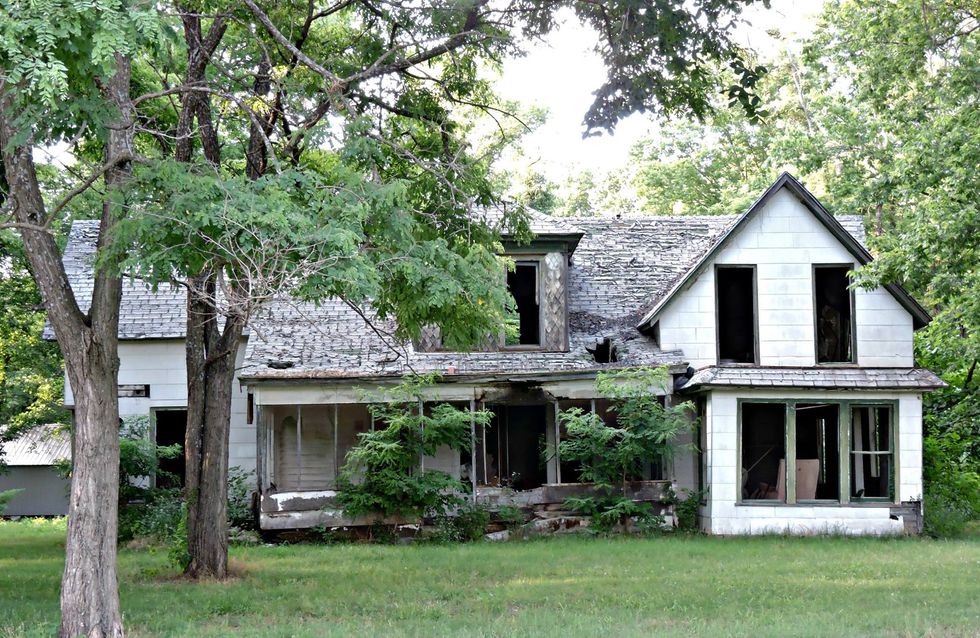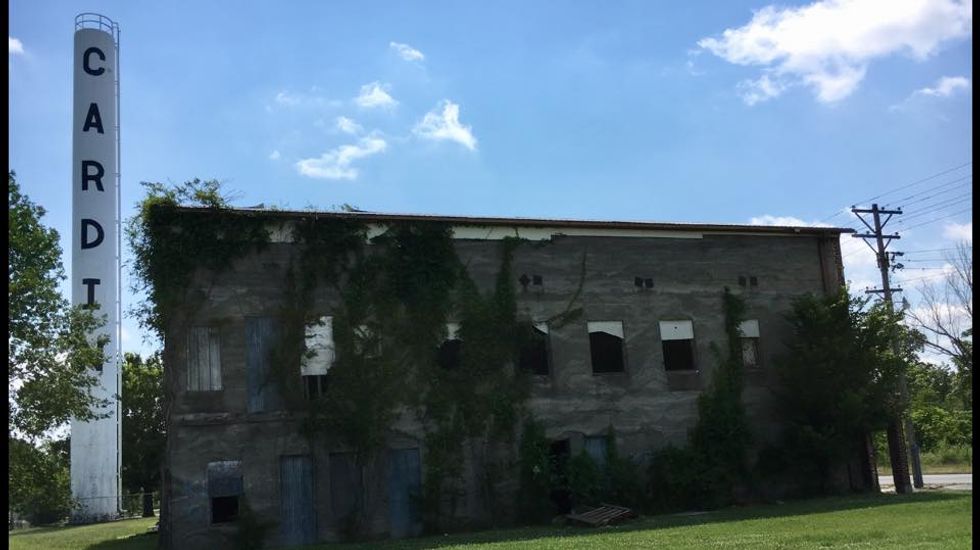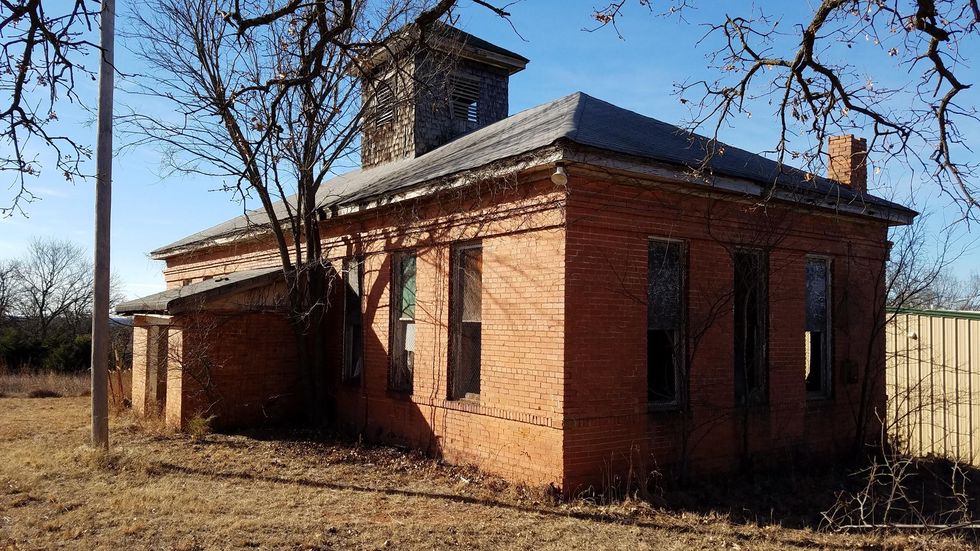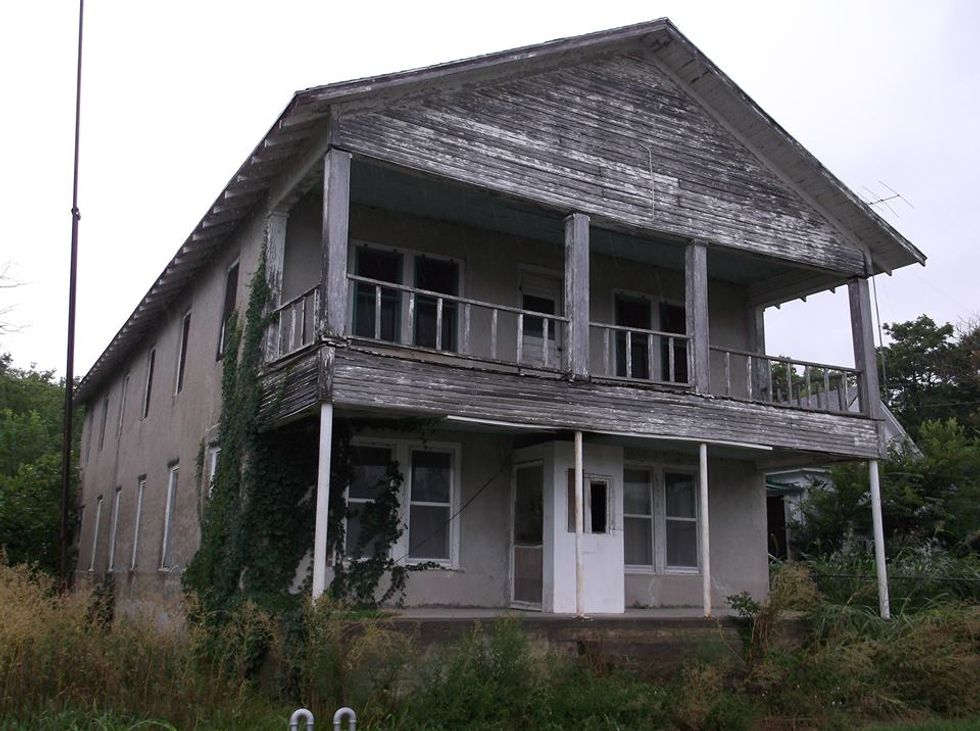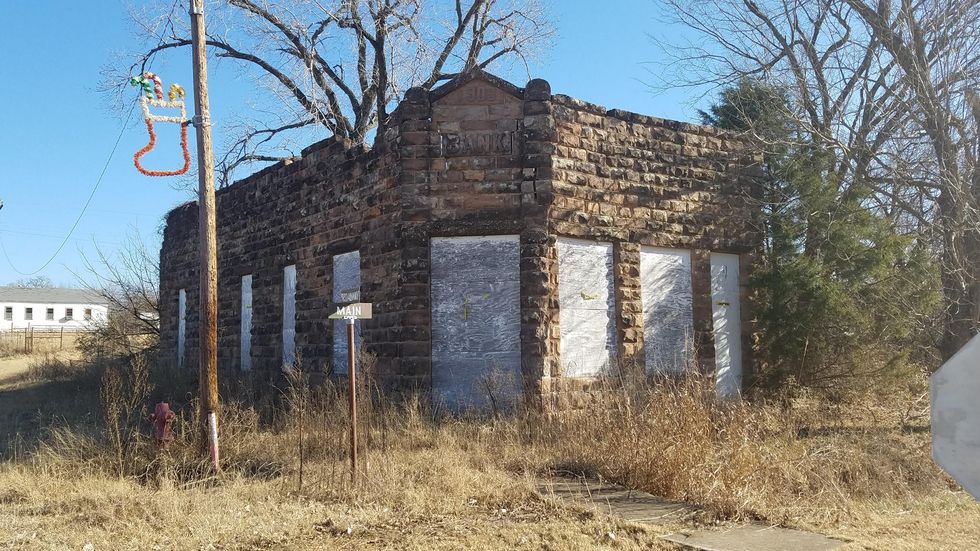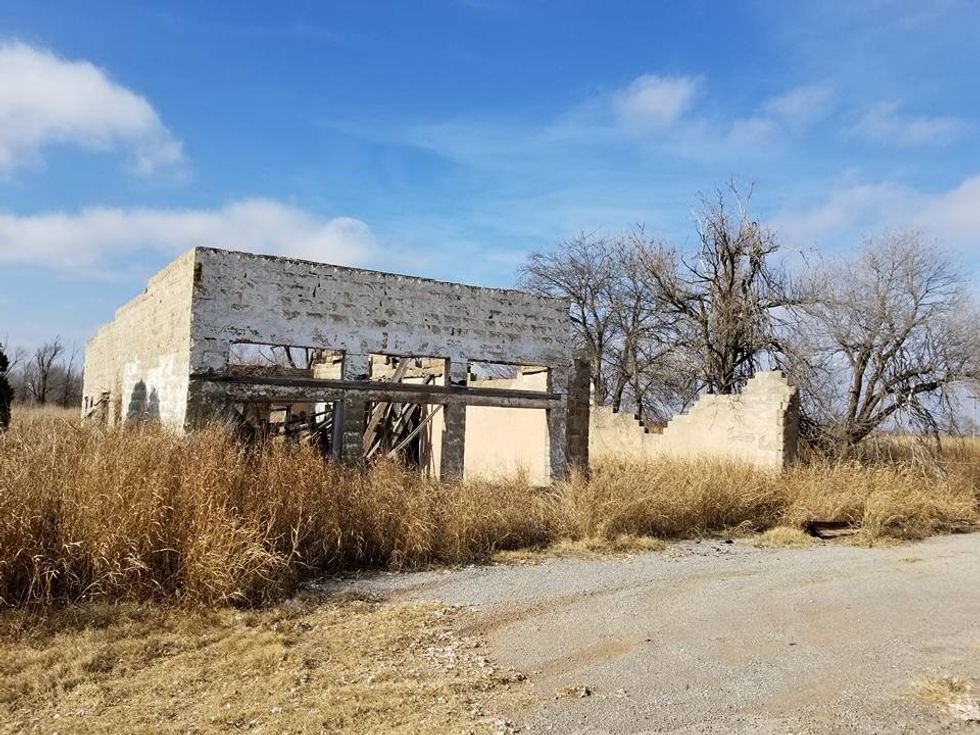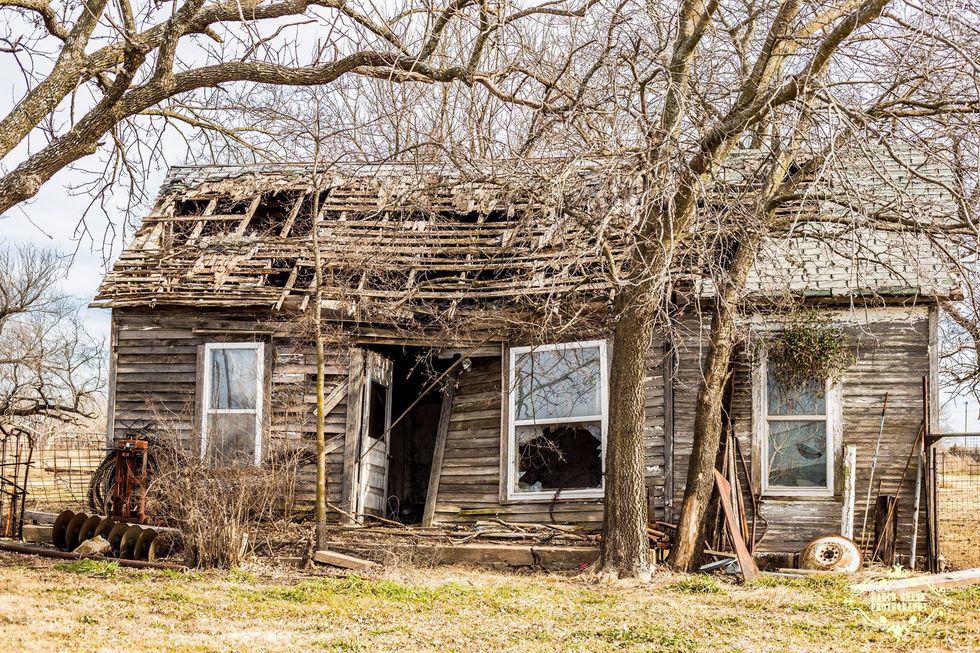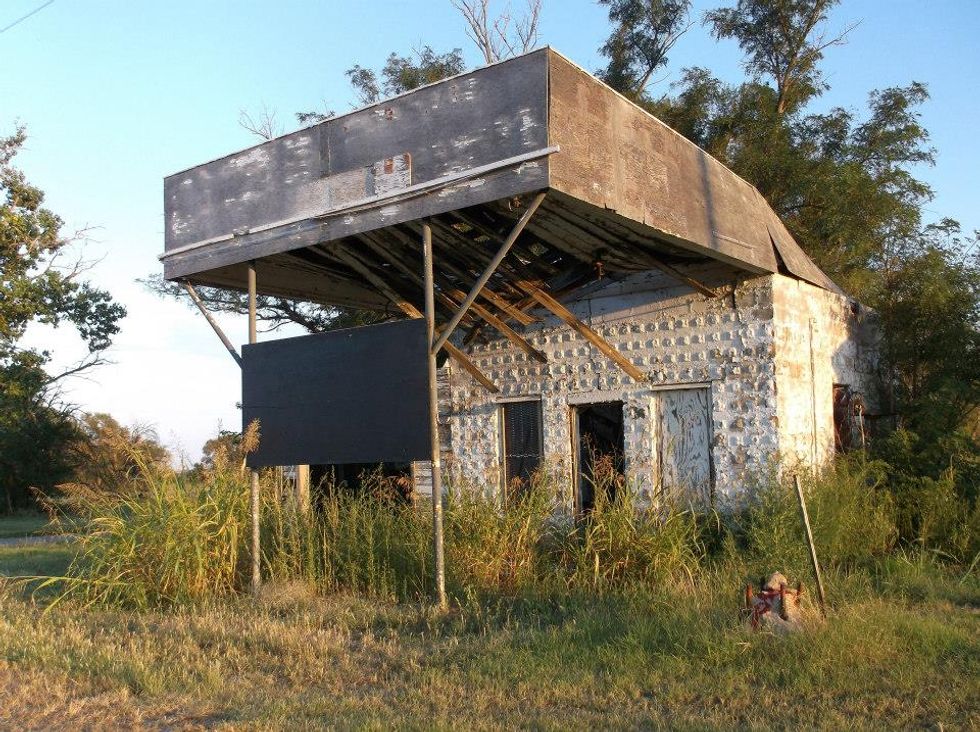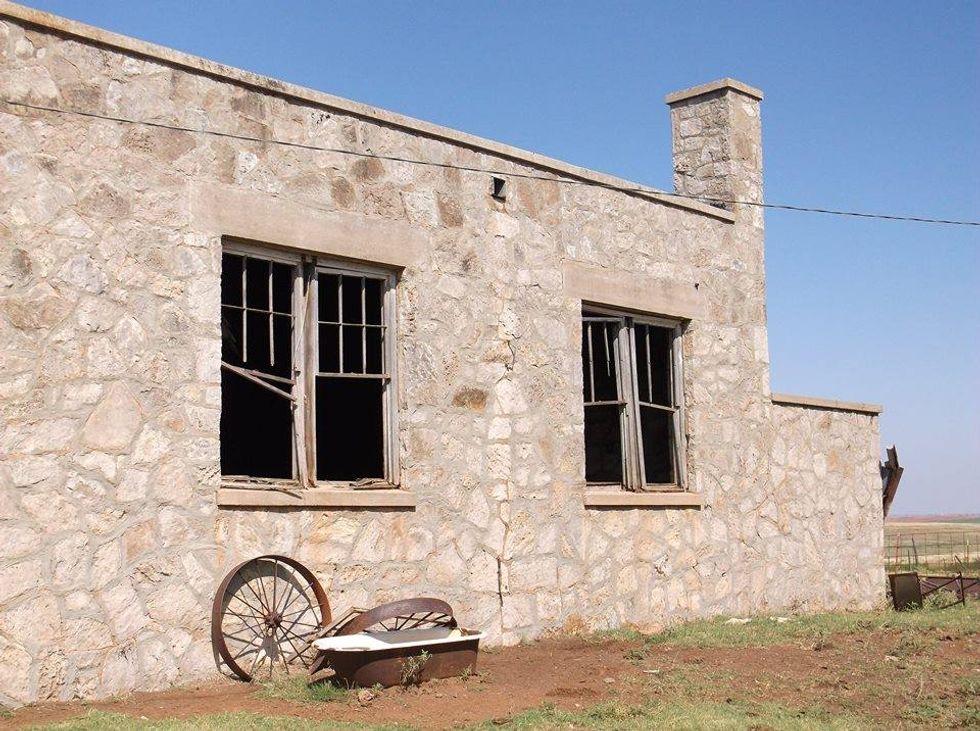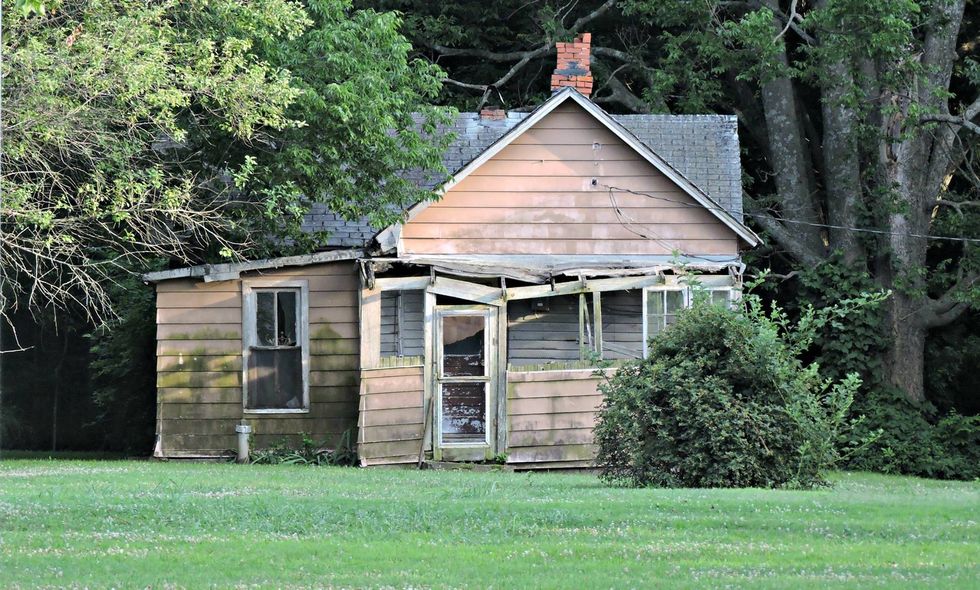While Oklahoma isn't considered a premier tourist destination for eager spring breakers, a spring break spent exploring the ruins of Oklahoma towns offers a combination of fun and education that can't be taught on South Padre Island, Miami Beach or on a college campus.
If you're on a budget this spring break, consider traveling around Oklahoma and visiting these hauntingly beautiful ghost towns. These towns are largely abandoned and offer a glimpse into the lives of Oklahoma residents before us. When you have a free day, pack a picnic and prepare for the road trip of a lifetime trying to see all of these ghost towns.
After you've visited a few and taken some amazing pictures, be sure to share them in this Forgotten Oklahoma Facebook group.
1. Cardin, Oklahoma.
Photo courtesy of Bob Cossairt
Cardin is located in Ottawa County, at the very northeastern corner of Oklahoma.
This mining town, formerly known as Tar Creek, had a population of about 3,000 in its hay day during the 1920s. It still had an operating post office until 2009, when there were still nine residencies in Cardin, but by 2010, the final family residing in Cardin accepted a federal buy out and reduced the population to zero.
Similar to other ghost towns in Ottawa County, the town was largely abandoned due to led poisoning. Today, there are still several standing structures.
2. Picher, Oklahoma.
Photo courtesy of Bob Cossairt
Also in Ottawa County, the more-famous sister city of Cardin, Picher stands abandoned.
In 1913, the mining town was founded basically overnight. By 1926, the town of Picher had a whopping 14,000 residents. The high population didn't last long, however, facing a slow decline due to mining inactivity. By the 1960s, Picher had a population of only 2,500.
During World War I, the tiny town was responsible for mining over 50 percent of all of the lead and zinc metal used during the war. This mining came with dire consequences, however, as many of the towns residents suffered from lead poisoning due to contamination of the water.
Those that did not abandon Picher due to the lead poisoning were forced to leave after a series of deadly tornadoes in the 2000s. The town graduated its final class of seniors in May of 2011, and the municipality of Picher was officially dissolved in 2013.
Today, the town is an eerie reminder of the effects that humans can have on the environment, and even themselves.
3. Fallis, Oklahoma.
Photo courtesy of Everett Warren
Closer to the middle of Oklahoma, in Lincoln County, the ghost town of Fallis lies.
Established as an Indian mission in the late 1800s, during the turn of the 20th century the town was full of railroad stops, businesses, hotels, banks and lumber yards. Sadly, the Great Depression and the Dust Bowl hit Fallis hard, and by the 1950s Fallis only had 150 residents.
The town is not completely abandoned, however. In the late '90s, a community center was built, and a volunteer fire station is still running today.
4. Burbank, Oklahoma.
Photo courtesy of Everett Warren
In Oklahoma's largest county, Osage County, Burbank is one of many ghost towns on the prairie.
Founded in 1903 by an Osage man, the town had a small population consisting of farmers and ranchers until the 1920s when petroleum was discovered nearby, making Burbank a boom town composed of 3,000 people that sprung up nearly overnight.
Several large petroleum companies participated in the exploitation Burbank, which was still owned by the Osage. The Osage owned mineral rights to the land that made them the "richest people in the world" during this period.
5. Sparks, Oklahoma.
Photo courtesy of Everett Warren
Another Lincoln county ghost town, Sparks currently still has a population of around 170 residents, making it considerably more occupied than most other towns on the list.
Located on the Deep Fork River, Sparks was once part of the Sac and Fox reservation that was dissolved in 190 as part of an agreement that stated every tribal member would receive a 160-acre allotment. The surplus land was part of Oklahoma's famous land run.
Sparks became part of a railroad stop, leading to a sizable population for a small amount of time. Before WW1, the town was home to 50 businesses. After the world wars, farming became a more costly than profitable occupation and people left Sparks looking for work elsewhere.
6. Victory, Oklahoma.
Photo courtesy of Barbara Sweatt
In Jackson County, the small town of Victory lies. Not much is known about it, but it is said there are still a few rural residents.
There is an abandoned school that closed its doors in 1956.
7. Maramec, Oklahoma.
Photo courtesy of Amy Hedges
Maramec can be found in Pawnee County. Much like Victory, little is known about the history of this small town, but censuses show that has never had a population of more than 376 people.
It is a population location for photographers who seek to photograph the beauty of a decaying home.
8. Texola, Oklahoma.
Photo courtesy of Everett Warren
Located in Beckham County, Texola was formerly known as Texoma. The town received its name because of disputes over the location of the town, and residents living in Texola in the early 20th century lived in both Texas and Oklahoma without ever moving.
The economy was based on agriculture and the town was home to a corn mill, cotton gins, and a grist mill. A weekly newspaper was published from 1902 to the 1920s. The addition of Route 66 through the town also helped the economy, but the population naturally declined over time. In the 2010 census, the population of Texola was 36.
9. Cloud Chief, Oklahoma.
Photo courtesy of Everett Warren
Located in Washita County, Cloud Chief had 3000 residents upon its founding, where it was a part of the Cheyenne-Arapaho reservation.
This vast expanse of land was known for fights over land claims in its early days, which led to a sharp decline in population. It regrew at the turn of the century, however, and was eventually made the county seat of Washita County. A school with the mascot of the warriors ran from the 1930s to the 1960s.
Today, the once-booming town is home to ruined buildings and permanently parked cars giving way to nature.
Photograph courtesy of Kaitlin Vinson
The ghost towns listed above are just a very few of the historic locations that Oklahoma has to offer. If you conduct online research, you'll find an extremely extensive list far beyond what is shown here. These towns are beautiful in that they once were places where people lived and loved as we do today, and they force us to reflect on the world we now know. Will our homes one day be like these?
Are we simply residing in boom towns that our grandchildren will explore on spring break? Will people see our homes and wish that the walls could talk?
I highly encourage you to go out and see the ghost towns Oklahoma has to offer this spring break. It's free, it's fun and it's educational.

